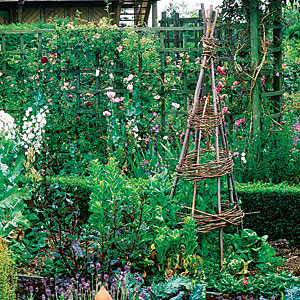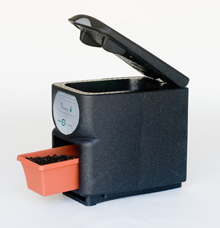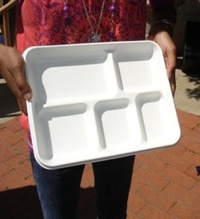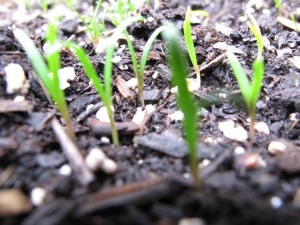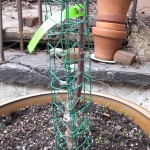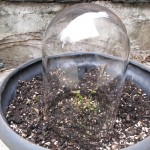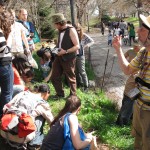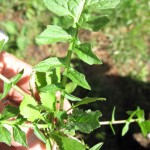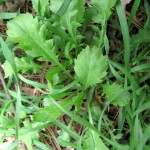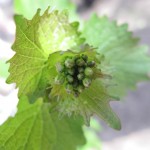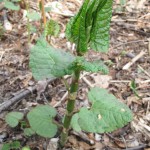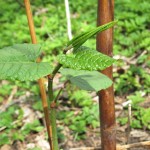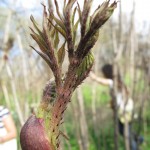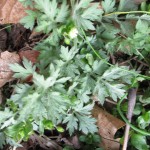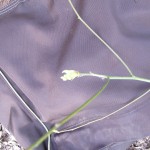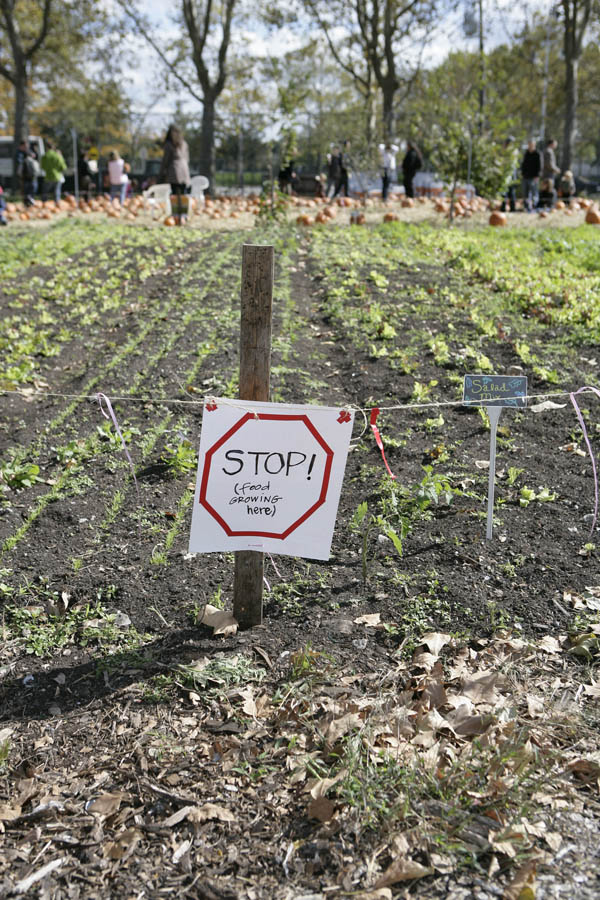
There is a lot of interest in urban gardening these days. Detroit might be the leaders in urban food production. This article is from the Detroit News:
Urban gardeners nurture nature in Detroit
Budding efforts add green to the city’s palette
David Josar / The Detroit News
Detroit — Mark Covington didn’t know when he lost his job as an environmental clean-up specialist he would become one of the city’s most celebrated urban gardeners.
The 37-year-old grew up with his grandmother and mother near Van Dyke and Georgia in a neighborhood that, despite some new housing, is dotted with abandoned homes and rubble piles. With the extra time of being unemployed last year, he decided to clean up the trash-strewn corner lot. His enthusiasm was infectious and with the help of neighbors, they began raising, tomatoes, greens, spinach and whatever else they could plant.
“I’m not sure how much we grew because everyone can come by to pick what they need,” said Covington.
Today the Georgia Community Garden, which was featured last month in Time magazine and has its own Web site, http://georgiastreetgarden.blogspot.com, includes 15 raised beds for vegetables and a small fruit orchard. The group also plans to host weekly concerts, beginning in June, in the garden.
Detroit’s urban gardening movement has sprouted from a loose network of like-minded individuals in the 1990s to what many consider a national example of how a struggling, decaying city can foster community while improving neighborhoods.
“Something has really taken hold,” said Councilwoman JoAnn Watson, an outspoken advocate of getting vacant land into the hands of gardeners. “It is attracting everyone. City residents. Suburban residents. Everyone is coming together.”
The trend is so popular that a new garden where Detroit residents and restaurants can rent parcels sold out before construction was completed this spring.
“For a lot of people there is such an interest in taking care of their own food,” said Annmarie Borucki, fundraising manager for the University Cultural Center Association, which created the plot-rental site known as the North Cass Community Garden. “There is an interest in the therapeutic affects of gardening.”
Borucki estimates the group will have spent $80,000 to transform the site of a former gas station into a vegetable and fruit-producing oasis for about 90 people. A 4-foot by 8-foot plot rents for $25 a season.
In another proposal, entrepreneur and city resident John Hantz plans to bring commercial farming back to Detroit, a challenge since zoning laws ban raising crops and livestock for profit.
Hantz Farms, according to a proposal being given to city leaders, would be the world’s largest urban farm and begin with 70 acres near Eastern Market that would include direct-to-market crops, a Christmas tree farm and hardwood timber for harvest.
“This will be revolutionary for the city,” said Matt Allen, senior vice president of Hantz Farms. “This will attract tourists. It will create jobs.”
City approval, particularly in getting the wide swatch of vacant land into the possession of Hantz Farms, is still needed.
A spokesman for Mayor Kenneth Cockrel Jr. said the city is exploring changes to city ordinances that could restore commercial farming in Detroit. The spokesman, Daniel Cherrin, said the mayor also has started a program that would speed up making vacant lots available to gardeners.
Converting the city’s vacant lots into food-growing enterprises could provide unemployed residents with supplemental income, reduce food transportation costs and give urban dwellers more fresh produce options.
By some estimates, urban farmers could gross $10,000 to $15,000 a year on a one-acre plot or less, depending on their skill level. That figure, however, doesn’t include costs for labor, taxes, insurance and equipment.
“I don’t think we’re going to see 1,000-acre farms in Detroit,” said Susan Smalley, director of the C.S. Mott Group for Sustainable Food Systems at Michigan State University. “But I do think it’s possible to grow intensively on a couple acres in Detroit and get a pretty good return on your investment.”
Leading the effort in the city is a network of nonprofit groups, spearheaded by The Greening of Detroit, a group founded in 1989 to replace thousands of blighted trees in the city, and Earthworks Urban Farm, a collaboration with the Capuchin Soup Kitchen.
Last year, Earthworks, located by the Mount Elliot Cemetery, raised 3 tons of food and 900 pounds of honey.
Another proponent is the Ferguson Academy for Young Women, a Detroit public school near the intersection of I-75 and I-96 that has a small working farm. Teachers incorporate the raising of goats, chickens and crops into classroom assignments. Educational institutions are exempt from the zoning rules that apply to businesses and residents.
The cornerstone for many Detroit gardeners is the Detroit Agricultural Network, a partnership between The Greening of Detroit, Earthworks Capuchin Soup Kitchen and Michigan State University Extension, which through its Detroit Garden Resource Program provides families and community gardeners with low-cost seeds, compost and classes. The cost for a family is $10.
Community leaders point to anecdotal evidence that interest and shovels-in-the-ground projects are up:
• A recent seminar at the Ferguson Academy on raising chickens in your backyard — which began with a disclaimer that the practice is illegal in Detroit — had more than 100 attendees.
• An annual tour of the city’s urban gardens begun in the late 1990s has grown from a handful of people to an event that draws more than 600 who ride in chartered buses.
• In 2007, The Detroit Garden Resource Program helped 340 individuals and groups with their gardens. In 2008, that tally jumped 45 percent with the group providing resources to 169 community gardens, 40 school gardens and 359 family gardens.
• And what can be an indicator of a growing trend, Garden Resource members sold their crops last year at six local farmers’ markets and six local restaurants, grossing $14,668.
Covington expresses amazement at how his tiny idea seems to have spurred a neighborhood movement.
“I’ve seen a change in the neighborhood, too,” he said. “People … come together. We are making a difference.”
djosar@detnews.com Christina Rogers contributed to this report.
Get your hands dirty
Where to volunteer or get help with your own garden:
Earthworks Urban Farm
1264 Meldrum, Detroit, has many volunteer opportunities. Call (313) 579-2100, Ext. 204, or contact them via e-mail at earthworks@cskdetroit.org.
Detroit Garden Resource Program
They provide classes, and individuals can become members to receive plants, seeds and compost. For more information, call The Greening of Detroit at (313) 237-8736 or visit www.detroitagriculture.org.
The Greening of Detroit
While focusing on planting trees and creating green space in Detroit, the group also needs volunteers and provides other resources to gardeners. For more information, call (313) 237-8736 or e-mail the group at info@greeningofdetroit.com.
Michigan State University Extension
MSU can help with everything from analyzing your soil to hosting classes on how to preserve produce. They can be reached at (517) 355-2308 or at (888) 678-3464.
How to start a city garden
Here are some tips:
Find a parcel of land. If privately owned, find the owner and get permission. If city- or county-owned, contact Detroit or Wayne County about purchasing the land. Although some people start gardens without permission, the strongest community gardens are those established through legal means.
Get a water source. Ask a neighbor; have the city install a water source and meter — a cost is involved; haul water yourself; or set up a rain barrel.
Get good soil. The MSU extension can help with soil testing. Or because of contamination fears, bring in new dirt and create a raised bed for planting.
Start planting. Seeds are cheap and readily available. Plants, though more expensive, can also be purchased at local farmers’ markets.
Source: Detroit Agriculture Network



